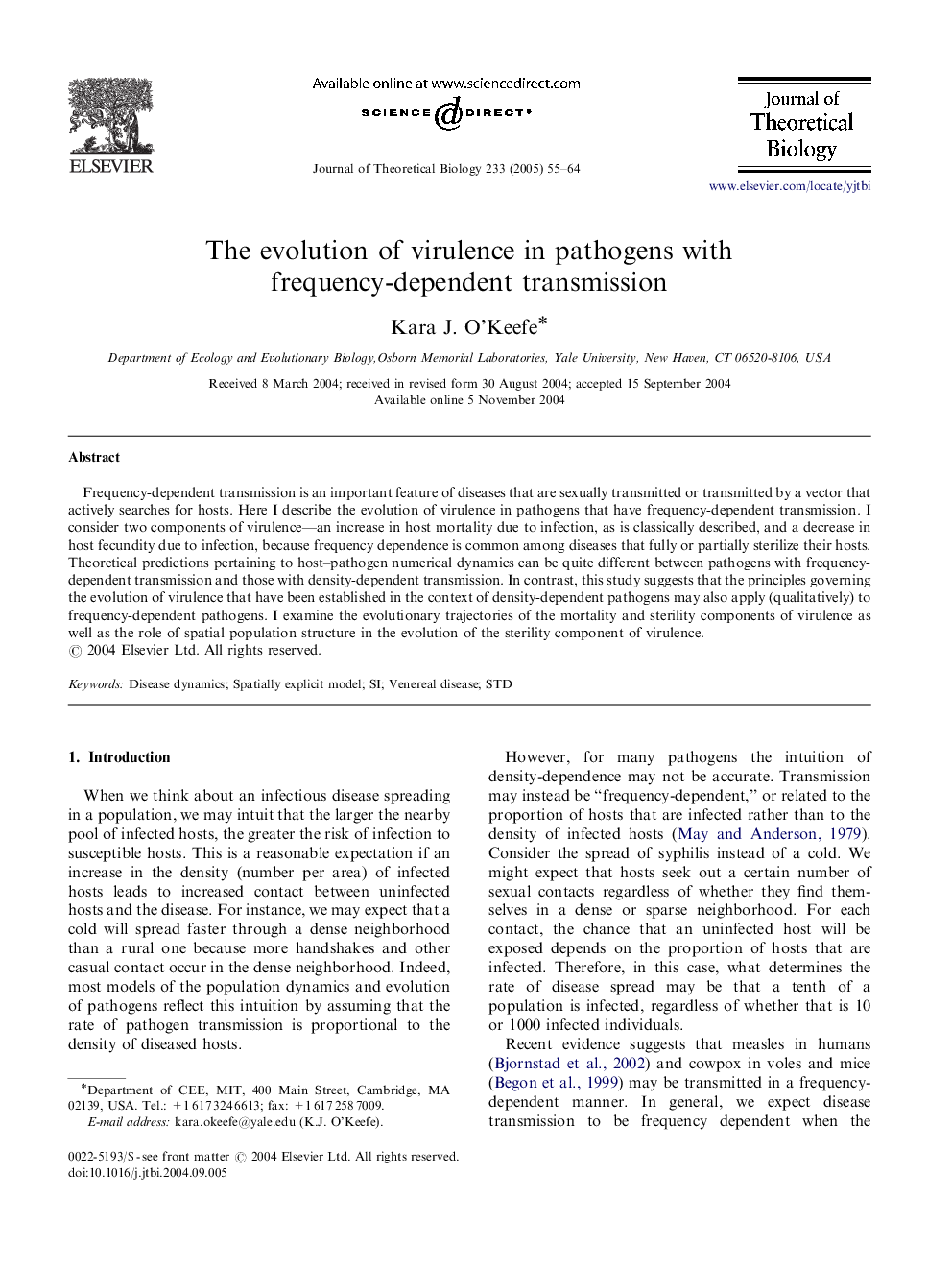| Article ID | Journal | Published Year | Pages | File Type |
|---|---|---|---|---|
| 9469838 | Journal of Theoretical Biology | 2005 | 10 Pages |
Abstract
Frequency-dependent transmission is an important feature of diseases that are sexually transmitted or transmitted by a vector that actively searches for hosts. Here I describe the evolution of virulence in pathogens that have frequency-dependent transmission. I consider two components of virulence-an increase in host mortality due to infection, as is classically described, and a decrease in host fecundity due to infection, because frequency dependence is common among diseases that fully or partially sterilize their hosts. Theoretical predictions pertaining to host-pathogen numerical dynamics can be quite different between pathogens with frequency-dependent transmission and those with density-dependent transmission. In contrast, this study suggests that the principles governing the evolution of virulence that have been established in the context of density-dependent pathogens may also apply (qualitatively) to frequency-dependent pathogens. I examine the evolutionary trajectories of the mortality and sterility components of virulence as well as the role of spatial population structure in the evolution of the sterility component of virulence.
Related Topics
Life Sciences
Agricultural and Biological Sciences
Agricultural and Biological Sciences (General)
Authors
Kara J. O'Keefe,
